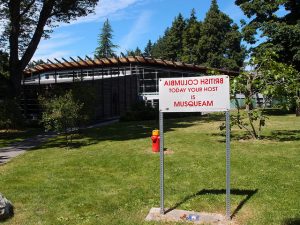Your task is to take the story about how evil comes into the world, the story King tells about the Witches’ convention in Chapter One of The Truth about Stories, and change it any way you want, except the ending. You can change to place, the people, the time – anything you want. But, your story must have the same moral – it must tell us how evil came into the world and how once a story is told, it cannot be taken back.
First, learn your story by heart, and then tell the story to your friends and family.
After you have told the story a few times, post a blog with your version of the story and some commentary on what you discovered about story telling.
There were once two immortal spirits who roamed the world by occupying the horizon together, above the skies. At first, they had no great influence on those below them. They would observe whatever interested them, and take on tasks of small miracles and punishments of misfortunes whenever they felt it was right. Slowly, they began to become one presence for all of the members that resided on a planet. They maintained the peace for the alternate beings around them. Even as the world continued to transform, the spirits had this inner understanding that they would continue living in harmony amongst other species, being this perfect entity to look up to: They would see this vast beauty of the sky–of colors they could only imagine in how to recreate, of images they could only fall short of, but would still try out of wonder and attempt of connection. It was a time where everyone thought of these spirits, who represented the good of the collective community, before making any decisions on their own.
All until one day, when there was the first trial of accusations and death on a most interesting case. There were a few beings who had lost interest in living and sacrificing for the long-term good, and began experimenting with risks. A bitter ‘son’ had murdered his own ‘father’. Having never understood the concept of death but of only moving through time, the spirits were unsure of how to deal with the situation. One of the spirits had developed a sympathy for the beings on this planet: They prevailed in forgiveness, believing that those who wronged others always deserved another chance. They also saw the potential in the ‘son’ and how it may have been neglected, and wanted to help. However, the other wanted the son to experience dire consequences, reasoning such from the loss of a ‘father’. For once, they could not agree with each other. This situation was only a catalyst for many more stories on how they disagreed in managing fate’s works.
The one exuding forgiveness wanted to instill some sort of Heaven, while the other became practically cynical of faith as beliefs that ‘do not come true’. This wholesome entity failed to be an example for the other beings around them, as they let their personal perspectives force them apart. They became the Sun and the Moon, holding different reflections on the horizon of life. Their eventual separation created a lot of angst over the years of possibilities and regrets, so that it made light, and at the same time, darkness, having wished upon nonexistence from one another, and having blurred the definition of love and goodness in the world.
And that was how this planet fell apart to create Earth. This is how evil was born, and resides now as a consciousness within us.

In regards to the solar eclipse and how the Sun and the Moon in my story represents this ultimate separation of good and evil, in nature: “What if evil doesn’t really exist? What if evil is something dreamed up by man, and there is nothing to struggle against except our own limitations? The constant battle between our will, our desires, and our choices?” -Libba Bray
King describes the elements in two stories in that “the elements in Genesis create a particular universe governed by a series of hierarchies…that celebrate law, order, and good government, while in our Native story, the universe is governed by a series of co-operations” (23). I initially wanted to bring both elements together, where the downfall comes from letting their own perspectives become their reality. It almost felt like I was recreating the images of “creators”, of a God and Satan that lived as one (at least, in my story). I went through another article about King’s perspective on storytelling, where he mentions that history is stories recounted from the past.
In the future of more intermingling cultures, I wonder if storytelling elements of myths and legends will be recombined in many art and storytelling pieces. For example, the lyrics in this seven minute song called Heaven by Ato x Eden, refer to Christianity (the valley of death), history (Malcolm X), and other beliefs (Yin and yang, the image of Venus) as a manner of connecting to his audience on his philosophy of life and its struggles, as well as the paradox on love and pain: “the dynamics of a lonely journey.” I think that in general, having multiple metaphors and images of other stories can amplify this common connection to understanding our morals and perspectives to begin with.
The people I have told this to have mentioned different things, for example having a particular admiration for the concept of how one of the spirits felt the right to establish a heaven on Earth. I wanted to keep both spirits unnamed and gender-less because for one, it intrigues me that the Christian God is referred to as a “He” while there are some who may use “Her” pronouns instead (an act of feminism, I’m not sure). In general I was able to remember the concept of the story.
A friend of mine commented on my story overall as a “good metaphor for the dissolution of black and white mentality” as the concept of evil in the real world moreso exists through a difference of perspective rather than a clearly evil decision by one particular side. I ended up telling her more about the inspiration I had from my favorite painting in a museum I went to this summer, found here. This abstract symbolism might be too much to wrap around, but here is more information on William Baziotes’s background and purpose in art. As there was no description by the painting, I came up with my own interpretation in which the middle white wavering line represented the unwavering horizon and two forces drawn in what almost looks like white graffiti (the circle, and another squiggly line). These forces are what reflects from the horizon. So one way to think about it is the separation of good (the circle) and evil (the serpentine line) constantly influencing our horizons.
(Note: Thanks to Chloe, I only updated the story as that involving humans to just alternate, mortal beings, so things might make a little more sense now.)
Works Cited
Ato & Eden. “Heaven”. Lyrics. Genius. Web. September 23, 2016.
Baziotes, William. Serpentine. 1961. Anderson Collection, 314 Lomita Drive Stanford, CA 94305. Anderson Collection. Stanford University. Web. 22 Sept. 2016.
Eastland, Jessie. Neapolitan Sunset. Digital image. Sunrise. Wikipedia, 24 July 2016. Web. 22 Sept. 2016.
King, Thomas. The Truth About Stories: A Native Narrative. N.p.: House of Anansi, 2003. Print.
McGonegal, Julie. “Thomas King’s Moment of Truth.” The UC Observer, Sept. 2013, http://www.ucobserver.org/culture/2013/09/moment_truth/.
“William Baziotes Biography, Art, and Analysis of Works.” The Art Story, http://www.theartstory.org/artist-baziotes-william.htm.

